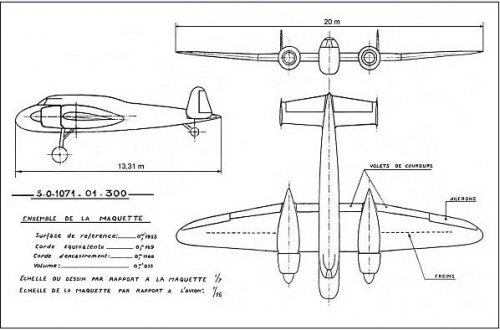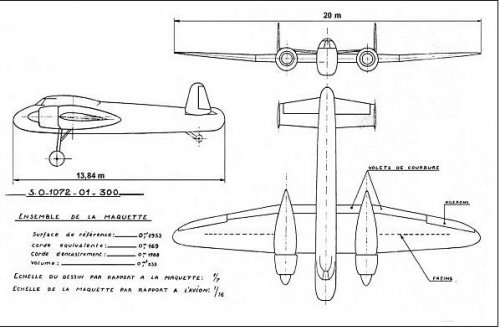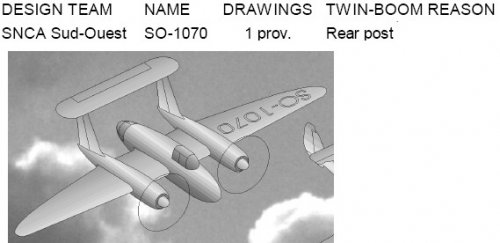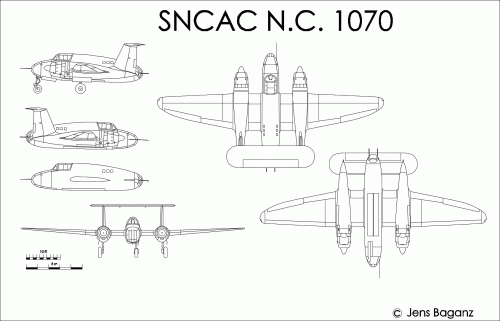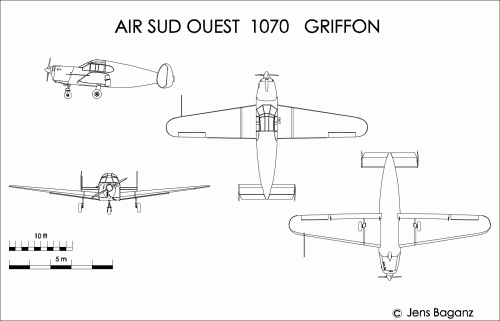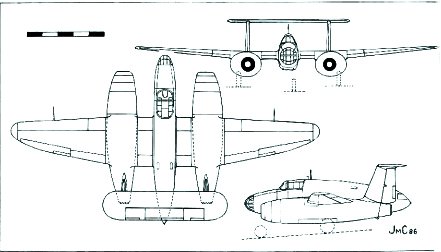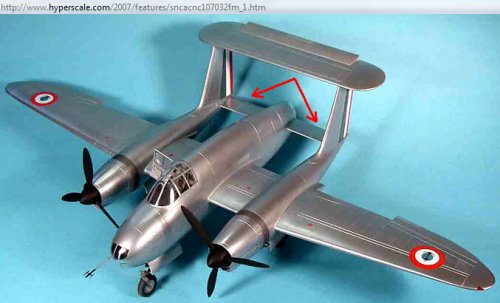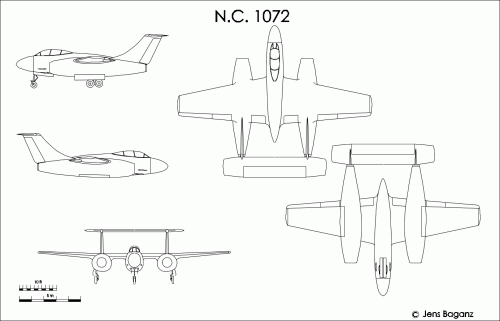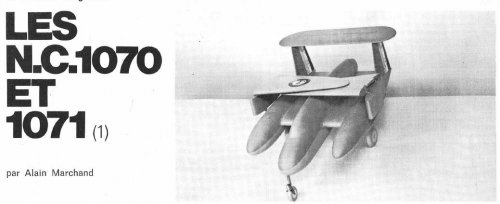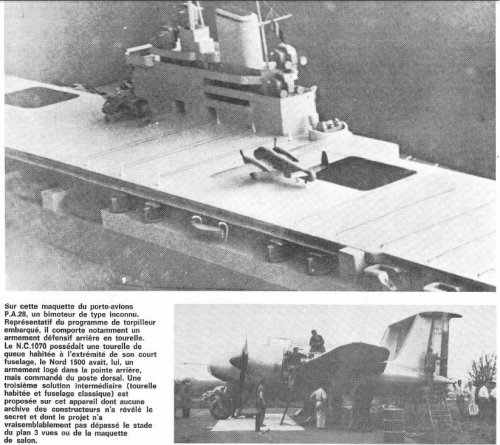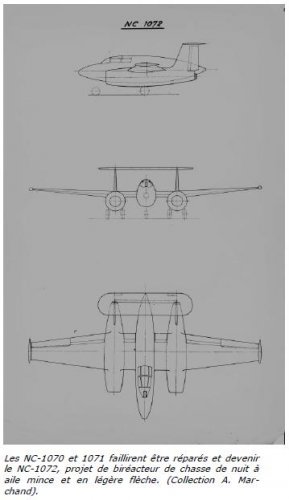We are struggling with a number of doublets amongst the designations of this era, I think.
I looked up again, but the probability, that the "1070" design simply was started by SNCASO
and later finished by SNCAC (my first thought) seems not very high to me, because those
companies didn't come together again before 1970.
Tophe, the aircraft you've drawn as "SO.1070" actually resembles extremely well the NC.1070.
If that was a triplex design, I'm not sure. The central fuselage reached further aft, than the
twin booms, but those were only connected by the tailplane, exactly as in your drawing.
Wouldn't in a triplex design the booms be connected to the fuselage by the tailplane, too ?
On
http://www.acam.asso.fr/histo/premiers_equipements7.php, there's a reference
to a SO.1070, but without further explanation. And there was the Air Sud Ouest 1070, called
"Griffon", too, a type, that had no relation to our theme, but is often called "SO.1070" in several
sources and so could muddy the waters further ( Both companies had nothing to do with each
other, AFAIK !).
Maybe there were twin boom studies for the SO.1070, too, but it really would be a strange coincidence,
I think, if those would have looked so similar to that quite weird SNCAC design. So, I'm afraid, we are
in fact talking about mixed-up sources here, but I happily would be wrong in this case.


